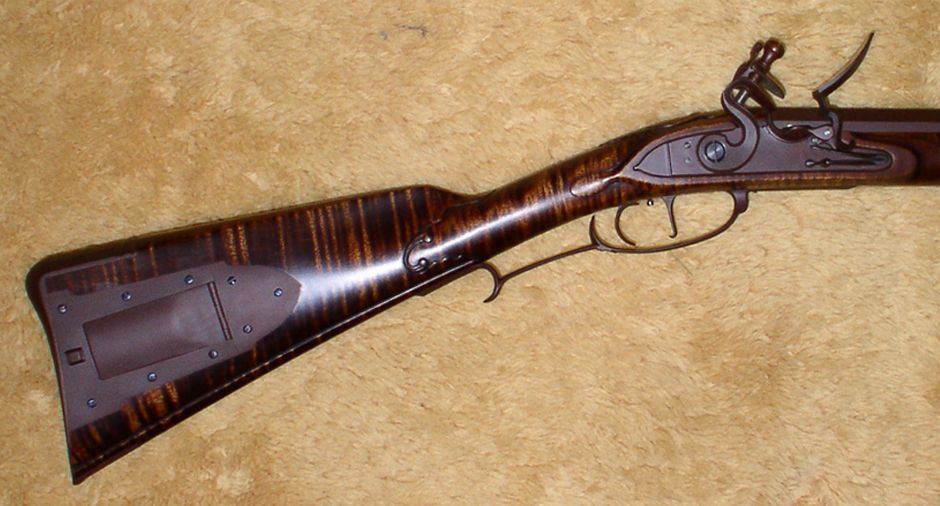This if for Ike too.
Since I let my fingers do the walking and punched out $700USD. I guess I better explain.
I have seen better examples for sale here on classifieds in the $700 price range.
The architecture of the rifle, the heart of it is poor. It does not have the artful flow of an original longrifle. The carving and "silver" cannot hide this. The study of longrifles helps you pick out this artful flow. This rifle simply does not have "the look".
The robust butt does not match or flow into the front of the rifle.
The wrist is too thick.
The lock and side panels are too large.
The sideplate bolt and screw work is sloppy.
The wood behind the breach and above the lock and side panels is too high and nearly flat with the tang. The top line of the barrel side flat should meet the top line of the side panel.
The carving does nothing for it. I mean it's OK at spots but honestly it's a little cheesy or fake looking around the lock panel beavertails.
The nickle silver clashes with the finish. Also nickel silver is late 19th century at best.
The entry pipe area and really the whole upper and lower fore stock in front of the trigger guard are not shaped as well as they could be.
Where the upper and lower forestock meet at the entry pipe, the transition is very abrupt. Some southern Mountains can pull this off. This one does not. This is what I meant by a mixture of styles.
The straight barrel, swamped would be more pleasing.
The maker would have been better off building a plain rifle with good architecture and simple brass mounts instead of this full house attempt.
Here is a TOTW Beck can you see the look I'm talking about?
Is it a good rifle. I'm sure it is for a hunter and reenactor and it would get a lot "oohs and ahhs" but for $2700+US much better can be had.














